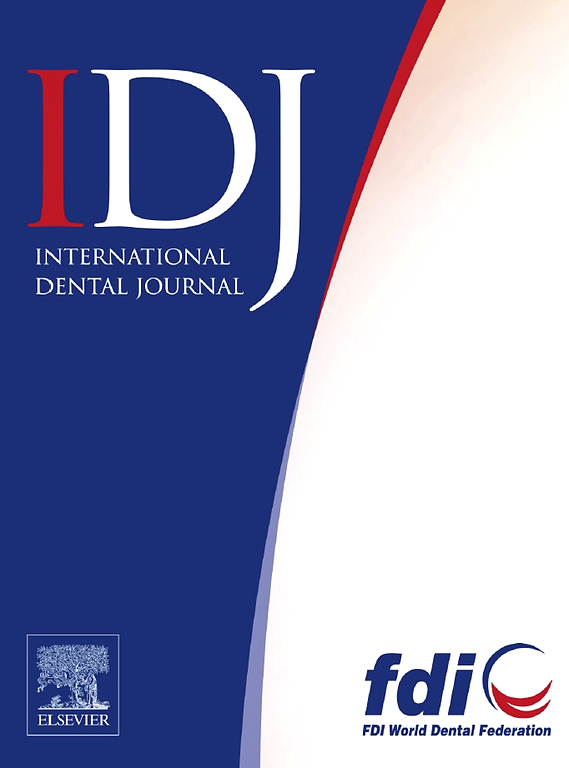Impact of Age-Related Bone Density Variations on Dental Implant Stability and Success Rates: A Retrospective Analysis
IF 3.7
3区 医学
Q1 DENTISTRY, ORAL SURGERY & MEDICINE
引用次数: 0
Abstract
Background
Dental implant success depends on factors such as age and bone density; this study evaluates how age-related bone density changes affect implant stability and survival.
Methods
This retrospective cohort study included patients receiving dental implants at the Affiliated Stomatological Hospital of Chongqing Medical University (March 2019-2024). Peri-implant bone density was measured by cone-beam computed tomography (CBCT) in Hounsfield units (HU) at coronal and apical sites 1, 2, 3, and 6 months postoperatively. The primary outcome was implant stability, assessed with resonance frequency analysis (RFA). Secondary outcome was early implant failure within 6 months. Implant success required stability without mobility or infection. Quality of life was the tertiary outcome, measured using the Oral Health Impact Profile-14 (OHIP-14).
Results
A total of 1,621 subjects with 1,821 implants were analyzed. Older adults (66-80 years) demonstrated lower bone density and stability, with markedly higher early failure (14.56%) and infection rates (22.78%, both P < .001), compared with younger groups (failure rate: 4.99% in 20-35 years; 1.07% in 36-50 years; 0.64% in 51-65 years). At 6 months, cumulative implant survival declined to 85.4% in the 66-80 years group versus >95% in younger groups. Logistic regression further identified age (OR = 0.481, P = .014) and low bone density (OR = 1.89, P = .019) as significant risk factors for early implant failure. The model showed good discrimination (AUC = 0.823) and acceptable fit (Nagelkerke R² = 0.21), supporting the robustness of these estimates.
Conclusions
Age-related bone loss may impair implant success. Older adults showed higher early failure risks, while younger patients experienced greater QoL gains, suggesting a need for age-specific, personalized implant strategies.
年龄相关性骨密度变化对种植体稳定性和成功率的影响:一项回顾性分析。
背景:种植牙的成功与否取决于年龄和骨密度等因素;本研究评估与年龄相关的骨密度变化如何影响种植体的稳定性和存活。方法:回顾性队列研究纳入2019年3月-2024年3月在重庆医科大学附属口腔医院接受种植牙治疗的患者。术后1、2、3和6个月在冠状和根尖部位的Hounsfield单元(HU)通过锥形束计算机断层扫描(CBCT)测量种植体周围骨密度。主要结果是用共振频率分析(RFA)评估种植体稳定性。次要结果是6个月内早期种植失败。种植体的成功需要稳定,无活动或感染。生活质量是第三指标,使用口腔健康影响概况-14 (OHIP-14)进行测量。结果:共分析了1621名受试者和1821个种植体。老年人(66 ~ 80岁)骨密度和稳定性较低,早期失败率(14.56%)和感染率(22.78%)明显高于年轻组(20 ~ 35岁失败率为4.99%,36 ~ 50岁为1.07%,51 ~ 65岁为0.64%)。在6个月时,66-80岁组的累积种植体存活率下降到85.4%,而年轻组则下降到95%。Logistic回归进一步发现年龄(OR = 0.481, P = 0.014)和低骨密度(OR = 1.89, P = 0.019)是早期种植体失败的重要危险因素。该模型具有良好的判别性(AUC = 0.823)和可接受的拟合性(Nagelkerke R²= 0.21),支持这些估计的稳健性。结论:与年龄相关的骨质流失可能影响种植体的成功。老年人显示出更高的早期失败风险,而年轻患者的生活质量更高,这表明需要针对年龄的个性化种植策略。
本文章由计算机程序翻译,如有差异,请以英文原文为准。
求助全文
约1分钟内获得全文
求助全文
来源期刊

International dental journal
医学-牙科与口腔外科
CiteScore
4.80
自引率
6.10%
发文量
159
审稿时长
63 days
期刊介绍:
The International Dental Journal features peer-reviewed, scientific articles relevant to international oral health issues, as well as practical, informative articles aimed at clinicians.
 求助内容:
求助内容: 应助结果提醒方式:
应助结果提醒方式:


